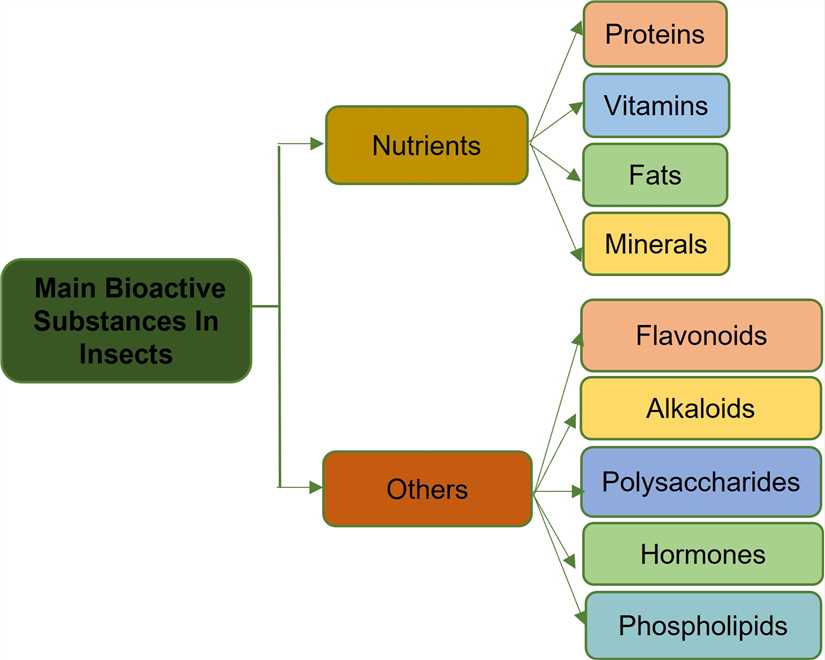Insects contain active substances such as flavonoids, alkaloids, polysaccharides, hormones, and phospholipids that have health-care functions for the human body. Natural bioactive substances have physiological activities such as anti-inflammatory, anti-cancer, and antioxidant. Insects or some insect secretions are rich in biologically active substances, including proteins, fats, hormones, chitin, vitamins, mineral elements, etc., which have a wide range of potential applications.
 Fig 1. Main bioactive substances in insects.
Fig 1. Main bioactive substances in insects.
Insect bioactive substances are involved in all physiological activities of insects, with the wide range of applications of active substances in insects, Lifeasible provides general biological activity testing services for insects to ensure they are qualified. We can provide testing services for total flavonoids, various esters, total dietary fiber, and mineral elements.
| Service Content | Methods | |
| Total flavonoids | Liquid chromatography-mass spectrometry (LC-MS) Lifeasible offers the technology of LC-MS to detect total flavonoid in insect samples. Coupled LC-MS systems are popular in total flavonoids analysis. The absolute quantification of flavonoids was performed by LC-MS. |
|
| Total dietary fiber | Biochemical extraction Lifeasible use biochemical extraction to detect total dietary fiber in insect sample like live insect, insect carcasses. This method can detect total dietary fiber accurately through heat stabilization and extraction by ethanol, the residue was washed with ethanol and acetone, dried and weighed, then we get the total dietary fiber residue. |
|
Mineral elements
|
Inductively coupled plasma atomic emission spectroscopy (ICP-AES) Lifeasible offers ICP-AES to detect mineral elements such as zinc, calcium, selenium/total selenium and Iron. Based on inductively coupled plasma atomic emission spectroscopy technology, it provides conventional mineral ions and heavy metal ions, and the standard curve is drawn by standards to achieve absolute qualitative quantification of target substances in insect samples. |
|
| Various esters | Gas chromatography-mass spectrometry (GC-MS) We combine the features of GC-MS to identify different substances within an insect sample. The method is compatible and accurate for the determination of medium and long chain fatty acid content in samples. |
|
|
|
|
Lifeasible provides active ingredient detection in insects with absolute qualitative of samples' determination and compatible and accurate of content by experienced scientists, researchers, and technicians. If you are interested in our active ingredient detection services or if you have any questions, please click online inquiry for more detailed information about the detection of total flavonoids, various esters, total dietary fiber and mineral elements in insect samples.